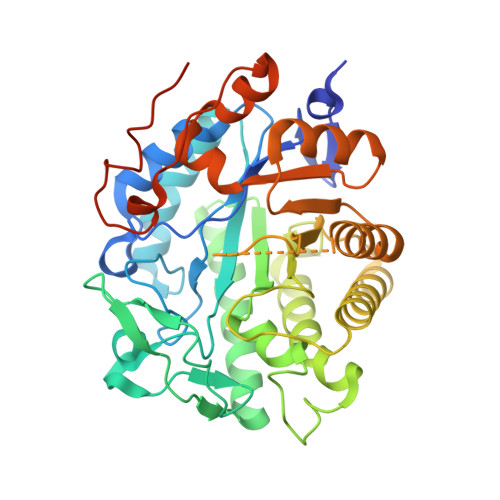Mechanistic Insights into the Ene-Reductase-Catalyzed Promiscuous Reduction of Oximes to Amines.
Breukelaar, W.B., Polidori, N., Singh, A., Daniel, B., Glueck, S.M., Gruber, K., Kroutil, W.(2023) ACS Catal 13: 2610-2618
- PubMed: 36846821
- DOI: https://doi.org/10.1021/acscatal.2c06137
- Primary Citation of Related Structures:
8A8I, 8AU8, 8AU9, 8AUA, 8AUB, 8AUE, 8AUF, 8AUG, 8AUH, 8AUI, 8AUJ, 8AUL, 8AUM, 8AUN, 8AUO, 8AUQ - PubMed Abstract:
The biocatalytic reduction of the oxime moiety to the corresponding amine group has only recently been found to be a promiscuous activity of ene-reductases transforming α-oximo β-keto esters. However, the reaction pathway of this two-step reduction remained elusive. By studying the crystal structures of enzyme oxime complexes, analyzing molecular dynamics simulations, and investigating biocatalytic cascades and possible intermediates, we obtained evidence that the reaction proceeds via an imine intermediate and not via the hydroxylamine intermediate. The imine is reduced further by the ene-reductase to the amine product. Remarkably, a non-canonical tyrosine residue was found to contribute to the catalytic activity of the ene-reductase OPR3, protonating the hydroxyl group of the oxime in the first reduction step.
Organizational Affiliation:
Department of Chemistry, NAWI Graz, University of Graz, Heinrichstraße 28, 8010 Graz, Austria.



















